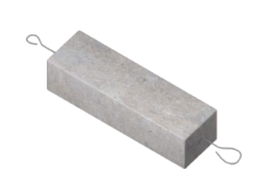Cathodic Protection of Reinforced Concrete Rebars
Cathodic Protection of Reinforced Concrete Rebars
Cathodic Protection of Reinforced Concrete Rebars
Cathodic protection of reinforced concrete rebars is a technique applied to protect reinforcing steel from corrosion. This method involves electrically making the steel rebars embedded in reinforced concrete structures negatively polarized. Cathodic protection reduces the rate of corrosion of the steel rebars and extends the lifespan of structures. This system is an ideal solution, especially for reinforced concrete structures exposed to aggressive environmental conditions such as marine structures, bridges, parking garages, and residential buildings. In practice, protection is achieved either by connecting a system powered by an external current source to the reinforcing steel or by using galvanic anodes.
Impressed Current Systems (Impressed Current Cathodic Protection - ICCP):
- A transformer rectifier unit is used to obtain direct current.
- The negative terminal of the direct current is connected to the reinforcing steel, while the positive terminal is connected to auxiliary anodes embedded in the concrete.
- The flow of current halts the corrosion processes around the steel, thus protecting the reinforcing steel.
Galvanic Anodes (Sacrificial Anode Cathodic Protection - SACP):
- Typically, zinc or aluminum anodes are used.
- Anodes are placed within the concrete and directly connected to the reinforcing steel.
- The anodes corrode more easily than the reinforcing steel and protect the steel by sacrificing themselves (sacrificial anode).
Applications and Advantages:
- Impressed Current Systems: Suitable for larger and more complex structures. Current intensity and distribution can be controlled, providing high efficiency.
- Galvanic Anodes: Suitable for small and medium-sized structures. Lower installation and maintenance costs, and does not require an external power source.

All Products
- Transformer Rectifier Unit (T/R)
- Mixed Metal Oxide (MMO) Coated Titanium Anodes
- Reference Electrodes
- SCADA Systems
- Packaged Magnesium Anodes
- Water Heater Magnesium Rod Anode
- Aluminum Anodes
- Zinc Anodes
- Cathodic Protection of Reinforced Concrete Rebars
- Line Markers and Measurement Boxes
- Insulating Flanges
- Canister High Silicon Cast Iron Anodes